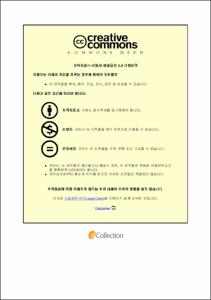오프셋 인쇄기반 PFD 인쇄전자부품 제조에서 롤러틈새의 페이스트내 공동의 변화에 관한 연구
- Alternative Title
- A study on the pore changes in paste at the nip of printing roller for manufacturing of the offset printing based PFD printed electronics
- Abstract
- The pore change in the printing nips of offset lithography which is one of the promised method were studied for manufacturing the PFD type printed electronics, the offset lithography printing method is a roll to plate (R2P), roll to roll (R2R) system that is printed by contacting the surface of roll and plate. The use of printed electronics products as well as roll coatings and polymer processing processes is increasing gradually, so research on fluid automatic control of the same thickness as the analysis of detailed fluid flow is important. Mathematical interpretation of the behavior of fluids passing through the niche (nip) of the roll to plate system is an essential part of understanding the flow of the fluid, and It is difficult to interpret the behavior of the fluid at once because the transfer of the fluid in an environment where the width of the nip is very narrow and the linear velocity is fast. Therefore, in the nip of the rotating two rolls the transfer rate and the splitting points of paste depend on the behavior of pores, physical properties including the porosity and the surface tension of the papers were experimented and obtained with different types of printed materials. Also corelation factor analysis between experimental and simulated results were performed. IGT printability tester and PDMS based polymers as a paste samples were used for this printing experiments, and obtained the data of splitting points, transfer rate, print through and printing density of paste samples. and Polyflow package software was used for the computer simulation of pore changes based on Navier-Stokes equation.
As a result, simulation results show that the width of the nip is small for PDMS with higher viscosity under steady state, the pore position moves to the center and the transition rate increases. This is because there are occurred more pore at higher altitudes. And simulation results showed that increased printing pressure reduces covering resistance and increases coverage area ratio to increase metastasis. The increase in the coverage area ratio was found to be consistent with the results of the simulation calculation with a density value ±0.003 and transfer quantity range ±0.005. The results of measurement of the print density, the amount of transition and the value of the show trough as well as the effect of covering resistance were performed, so that the simulations might correct by modifying them. The larger the air porosity, the more likely it is to be affected by the print pressure. It was because the point at which the pore is divided by the higher print pressure moves to the center and increases the transition rate. And the faster the printing speed, the lower the print density regardless of the air porosity, This is thought to have been lacking in time to be affected by air porosity, as the transfer time of fluids at fast printing speeds was short. The higher the surface strength of the printed material, the more resistant the printing speed and the printing trouble of the PDMS sample, but at the printing speeds above 0.8 m/s, the results of same printing trouble resistance were found regardless of the surface strength. This results in a low correlation between the surface strength of the printing material and the resistance of the printing trouble.
Results of this study, the higher the viscosity, the printing pressure of the fluid and the air porosity of the printed material, the higher the transfer rate and the quality of the printed material. however, both the collection range (10∼500 poise) of the PDMS samples showed a slight decrease in quality at a print pressure of 700N or higher, confirming a small change in the metastasis of the fluid in sections above the print pressure of 700N.
Under steady state conditions, the number of pore that exit of nip was simulated to 5, but we will continue to study the change in number of pore and creation process. These findings are thought to be useful for research in the field of printed electronics using offset systems demanding more precise and uniform products as an interpretation of fluid flow in R2P systems.
- Issued Date
- 2020
- Awarded Date
- 2020. 2
- Type
- Dissertation
- Keyword
- offset printing PFD PDMS pore simulation
- Publisher
- 부경대학교
- Alternative Author(s)
- Yun-Taek Kim
- Affiliation
- 부경대학교 대학원
- Department
- 대학원 인쇄공학과
- Advisor
- 오필건
- Table Of Contents
- 1. 서 론 1
2. 이 론 4
2-1. 잉크의 전이이론 4
2-1-1. 공동설 4
2-1-2. 점탄성설 6
2-2.잉크 전이 방정식 6
2-2-1. Tollenaar의 인쇄적성 계수 6
2-2-2. Walket-Fetsco 전이 방정식 11
2-2-3. 잉크 전이 곡선 14
2-3. 피인쇄체의 물성 16
2-3-1. 다공성 피인쇄체의 지료 조성 16
2-3-2. 피인쇄체의 물리적 성질 17
2-3-3. 피인쇄체의 광학적 성질 18
2-3-4. 기공의 직경 20
2-3-5. 기공의 개수 20
2-4. 유한요소법 22
2-4-1. 전산유체역학 22
2-4-2. 수학적 모델링 24
2-4-3. 시뮬레이션의 구성 26
3. 실 험 30
3-1. 실험재료 30
3-2. 실험장치 33
3-2-1. 오프셋 인쇄적성시험기 33
3-2-2. 농도계 34
3-3. 시뮬레이션 35
3-4.실험방법 41
4. 결과 및 고찰 43
4-1. 공동의 성장과 분열 43
4-2. 압력과 점도의 영향 48
4-3. 피인쇄체의 기공도에 따른 유체전이 영향 52
4-4. 피인쇄체의 표면특성이 인쇄적성에 미치는 영향 55
4-5. 시뮬레이션에 의한 전이율 계산 58
5. 결 론 60
참고문헌 63
- Degree
- Doctor
- Files in This Item:
-
-
Download
 오프셋 인쇄기반 PFD 인쇄전자부품 제조에서 롤러틈새의 페이스트내 공동의 변화에 관한 연구.pdf
기타 데이터 / 1.25 MB / Adobe PDF
오프셋 인쇄기반 PFD 인쇄전자부품 제조에서 롤러틈새의 페이스트내 공동의 변화에 관한 연구.pdf
기타 데이터 / 1.25 MB / Adobe PDF
-
Items in Repository are protected by copyright, with all rights reserved, unless otherwise indicated.